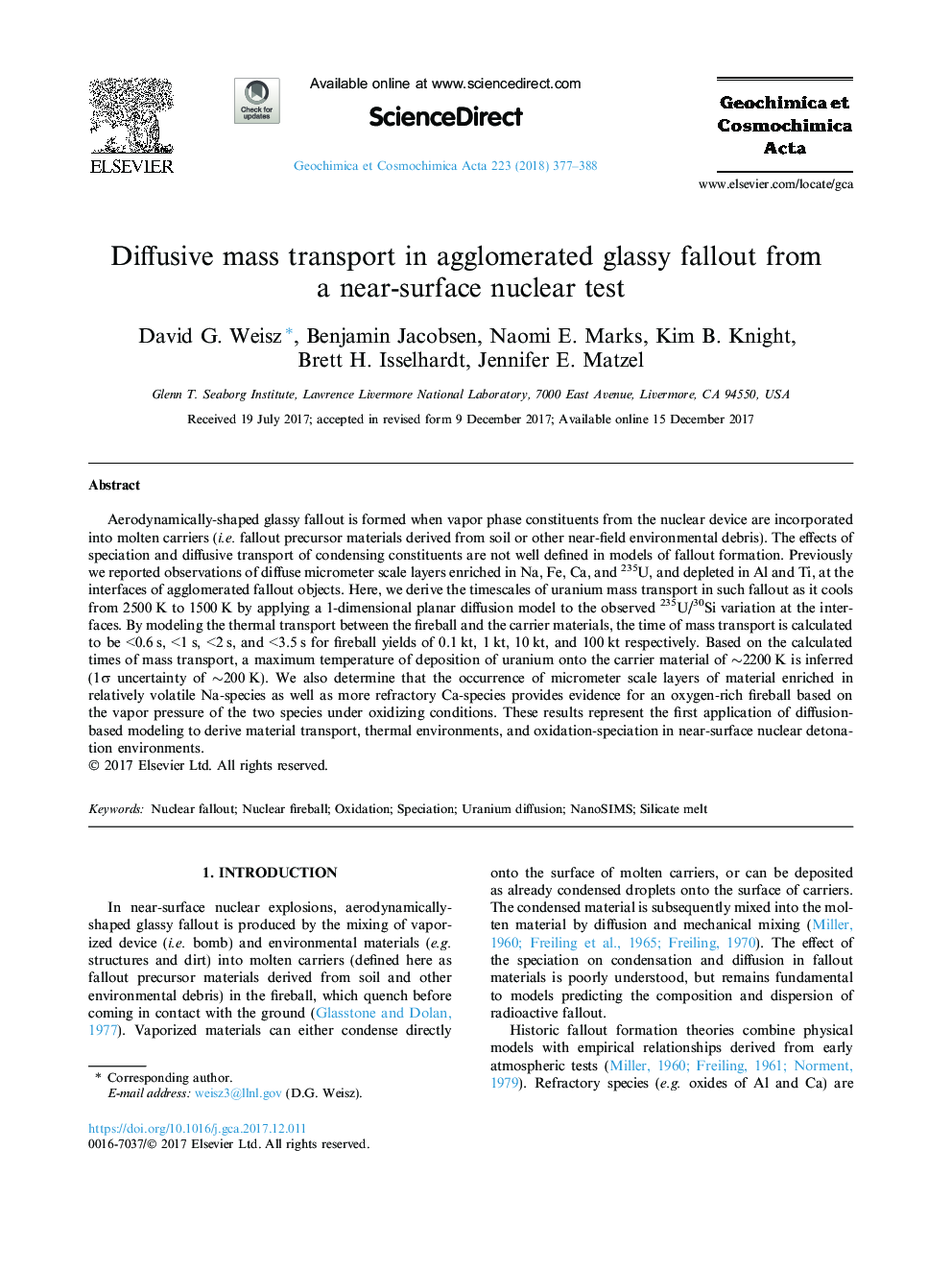| Article ID | Journal | Published Year | Pages | File Type |
|---|---|---|---|---|
| 8910911 | Geochimica et Cosmochimica Acta | 2018 | 12 Pages |
Abstract
Aerodynamically-shaped glassy fallout is formed when vapor phase constituents from the nuclear device are incorporated into molten carriers (i.e. fallout precursor materials derived from soil or other near-field environmental debris). The effects of speciation and diffusive transport of condensing constituents are not well defined in models of fallout formation. Previously we reported observations of diffuse micrometer scale layers enriched in Na, Fe, Ca, and 235U, and depleted in Al and Ti, at the interfaces of agglomerated fallout objects. Here, we derive the timescales of uranium mass transport in such fallout as it cools from 2500â¯K to 1500â¯K by applying a 1-dimensional planar diffusion model to the observed 235U/30Si variation at the interfaces. By modeling the thermal transport between the fireball and the carrier materials, the time of mass transport is calculated to be <0.6â¯s, <1â¯s, <2â¯s, and <3.5â¯s for fireball yields of 0.1â¯kt, 1â¯kt, 10â¯kt, and 100â¯kt respectively. Based on the calculated times of mass transport, a maximum temperature of deposition of uranium onto the carrier material of â¼2200â¯K is inferred (1Ï uncertainty of â¼200â¯K). We also determine that the occurrence of micrometer scale layers of material enriched in relatively volatile Na-species as well as more refractory Ca-species provides evidence for an oxygen-rich fireball based on the vapor pressure of the two species under oxidizing conditions. These results represent the first application of diffusion-based modeling to derive material transport, thermal environments, and oxidation-speciation in near-surface nuclear detonation environments.
Related Topics
Physical Sciences and Engineering
Earth and Planetary Sciences
Geochemistry and Petrology
Authors
David G. Weisz, Benjamin Jacobsen, Naomi E. Marks, Kim B. Knight, Brett H. Isselhardt, Jennifer E. Matzel,
